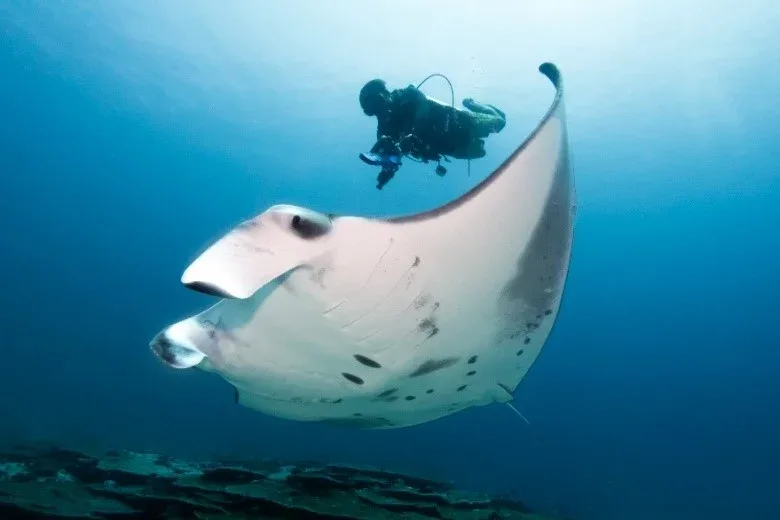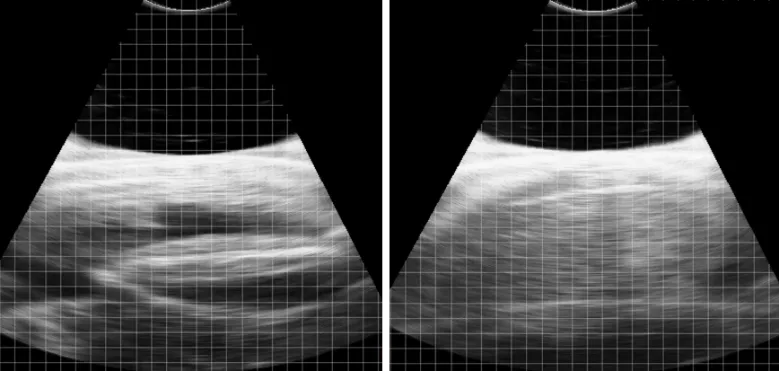
28.04.2019
When cutting edge technology joins with scientific research, the results can be astounding. A recent collaboration in the Maldives has enabled marine biologists to successfully scan a pregnant reef manta ray underwater and obtain clear ultrasound images of her foetus using the world’s first contactless underwater ultrasound scanner: The Duo-Scan:Go Oceanic.
Designed, developed and manufactured by IMV imaging and successfully field tested on wild reef manta rays by scientists from the Manta Trust and Cambridge University Veterinary School, The Duo-Scan:Go Oceanic represents significant improvements on previous technologies: it can be taken to depths of up to 30 m and—with the assistance of Wi-Fi and a smartphone as a viewing screen—it is small enough to fit in the palm of your hand.
In the past, the only way to scan aquatic animals was to remove them from the water, restrain them, or take conventional ultrasound scanners underwater in bulky waterproof housings. These methods required physical contact, thereby stressing the animal.
Chief Executive of IMV imaging, Alan Picken, highlighted the two years of development taken to address these previous limitations, while also ensuring the device was user-friendly for aquatic researchers.
“Our team of Scottish engineers had to ensure the device was durable enough to be taken to the same depths as recreational SCUBA divers, manoeuvrable enough to aid the diver in scanning but not so flexible that strong ocean currents would inhibit is functionality. It was a delicate balance and a great feat of engineering,” commented Mr Picken.
“What we are really excited about is the contactless nature of this technology. There are significant benefits for animal welfare, but you also open up a whole range of possible applications if you can scan animals that ordinarily wouldn’t let you get close enough to touch them.”
Researchers from the Manta Trust and Cambridge University Veterinary School verified the contactless technology works in field tests carried out in collaboration with the Vetsonic (UK) Ltd and Six Senses Laamu, a five-star resort in the Maldives with a nearby resident reef manta ray population.
Successfully scanning the often-skittish reef manta rays was no small feat, commented Dr Guy Stevens, Co-Founder and Chief Executive of the Manta Trust.
“When the project began, none of the team knew whether scanning wild reef manta rays would even be possible. What has been achieved is beyond what we could have hoped for,” commented Dr Stevens.
“More than just scanning a reef manta ray and proving that this contactless technology works, we were able to obtain the first ever scans of wild reef manta rays; pregnant and non-pregnant females, as well as mature males.
“Manta rays are threatened worldwide and we still know so little about their reproductive strategies. The ability to scan pregnant individuals will be invaluable in our quest to protect them,” commented Dr Stevens.
The Duo-Scan:Go Oceanic could have applications for the conservation of a whole range of threatened marine life, not just manta rays, commented Mr Picken, including the study of gestation, disease, body composition and health.
“Trials are planned with collaborators worldwide to investigate the wide range of possible applications,” commented Dr Gareth Pearce from the University of Cambridge Veterinary School.

Manta Trust researcher Haisham Rasheed approaches a wild reef manta ray to scan it. Credit: Andrew Ball.

Ultrasound scans from the Duo-Scan: Go Oceanic showing a foetus inside a reef manta ray (left; credit Haisham Rasheed) and the empty body cavity of a non-pregnant reef manta ray (right; credit Alex Berry).
